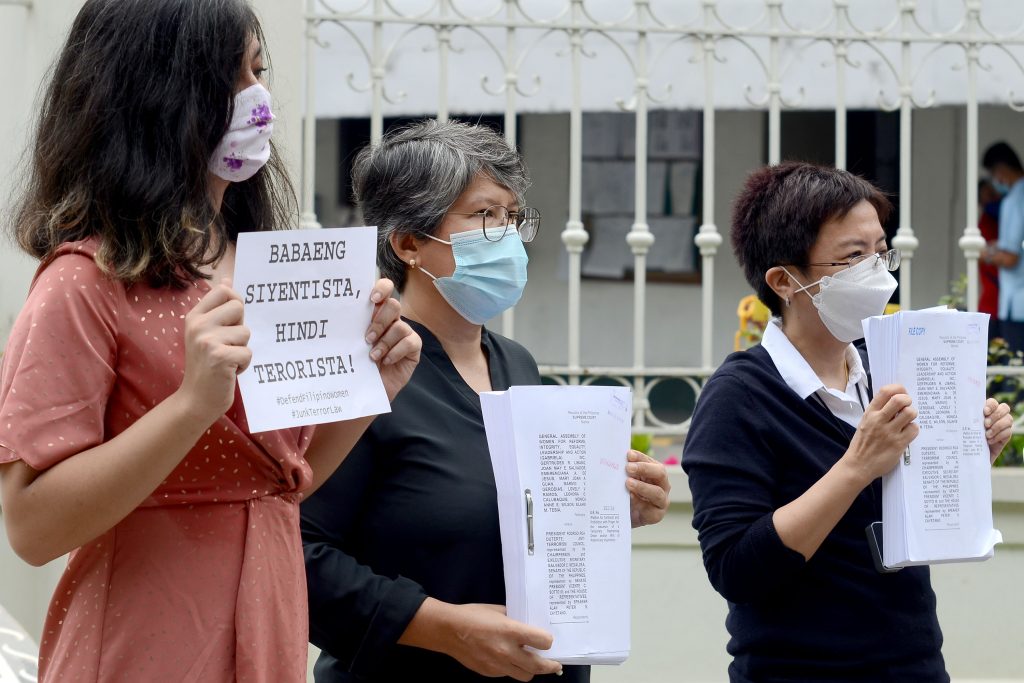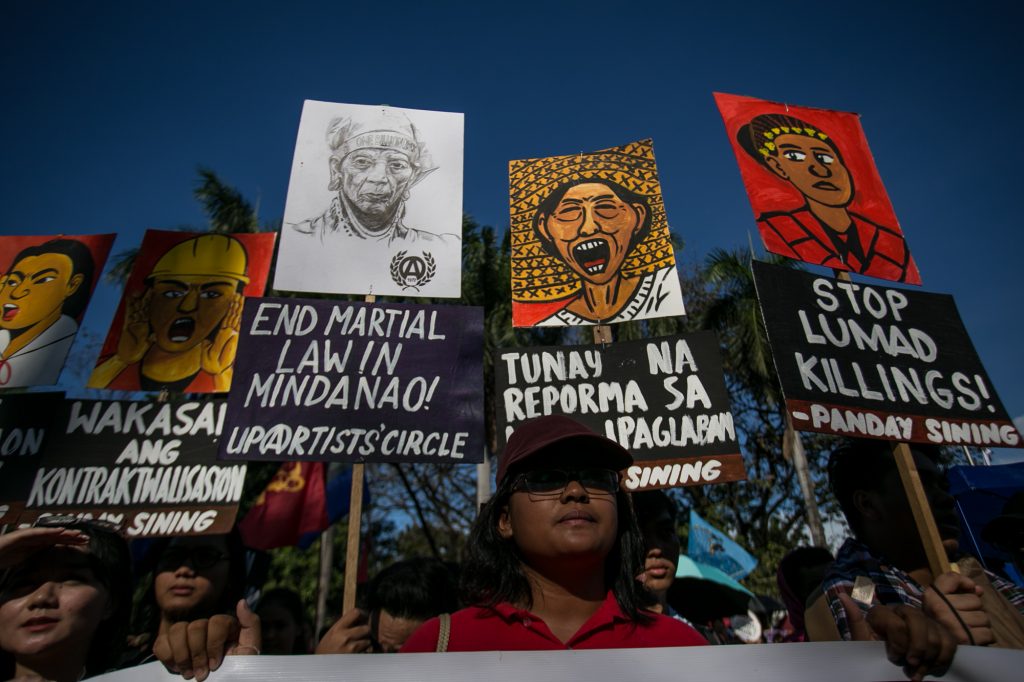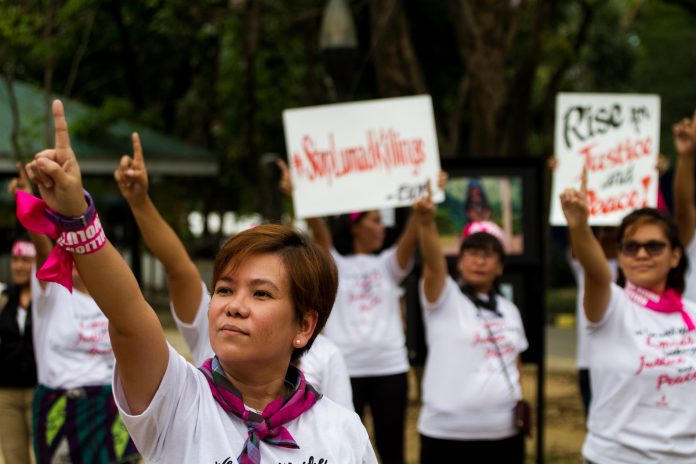Magdalena. In the Philippines, it means “fallen woman,” she whose body and soul crawls in the muck; unloved, reviled as a menace to the true, the good, and the beautiful.
Since the time of the Spanish friars — who raped local women as they preached about virginity and fortitude towards straying spouses — to today’s world under President Rodrigo Duterte, Magdalena is a word that holds layers of meaning.
There is pity for the victim. There is also contempt: old notions of fate always saw misfortune as the consequence of disobedience.
Then and now, women in Asia’s biggest Catholic majority are told to run, to cower, to meekly follow dictates or else be complicit in their degradation.
Not too long ago, bishops saw reproductive rights activists as “whores” and accused members of the LGBTQ community of being worse than beasts. That verbal abuse encouraged sexual molesters to see “bitches” as fair targets for domination.
This is 2020. Legislation exists on violence against women, but the Philippine guardians of law and order still act like medieval guardians of morality.
Police “help aids” warn women against dressing in mini-skirts, or consuming alcohol, or anything that would rouse the beast in men.
No damsel in distress
Many Filipino Catholics don’t even know that the popular notion of Mary Magdalene as “reformed prostitute” is false.
It is true, as Bishop Pablo Virgilio David of Kalookan said in his July 22 homily, that lack of social protection often forced widows in the time of Jesus to turn into prostitution.
Early Christians, following Jesus’ example, did their best to shelter and care for widows, instead of shunning or stoning them.
Even in this context, nothing in the gospels calls Mary of Magdala a prostitute. Instead, Luke described her as a woman “cured of evil spirits and infirmities.”
The Magdalene is known as the first person who saw the Risen Lord. St. Thomas Aquinas called her “The Apostle to the Apostles” because she was the one who announced Christ’s resurrection.
Yet for all the praise, Mary Magdalene of the “blessed feminine genius” has seemed a curiously passive creature, as if “being and accompanying” took no more than a willingness to be swept up in the tides of history.
Magdalene and the other women of the gospels did more than watch.
Mother Mary hustled to forestall disaster during the wedding in Cana; Veronica braved Roman centurions to wipe Jesus’ bloody face.
These women were at the foot of his Cross in Calvary. They helped take down his broken body and took this to the sepulcher.
Magdalene met the Risen Christ first because she was steadfast, not just in prayers. She was in actual, physical vigil. The men were asleep.

Sins of the Patriarchs
Pope Francis calling the Magdalene, considered a saint by the Roman Catholic and Eastern Churches, as empowered “icon of fidelity” — a leader in her own right — reflects a sea change from the old view of her clinging to Jesus for protection.
Christ was never a white knight in the medieval sense. He recruited women because, given the example of His Mother, he valued their worth beyond the bed and the kitchen sink.
It’s easy to see why a Church ruled by patriarchs, who engaged states mainly ruled by other men, decided to rip through the reputation of Mary of Magdala.
They turned her into a ward of powerful males, thus tainting all her acts. It took the institutional Church until 1969 to acknowledge that much of conventional wisdom was wrong.
That glaring oversight, more deliberate than accidental, exacted a very high toll on women through the centuries.
I am still haunted by a documentary on the “Magdalene Laundries” of Ireland. The Sisters of Our Lady of Charity ran this string of homes/workplaces “for fallen women” for more than 150 years, all the way to 1992, just 18 years ago.
Initially, prostituted women — rounded up with the help of the state — made up most of the inmate population. Then families sent every category considered deviant — unwed mothers, those who refused to be married off by parents, those who fell in love without the consent of guardians, even women who had been raped. Their sentences varied: some stayed for months until they were “broken” and made docile; some stayed for life. All were practically slaves, working for their food and shelter, subjected to harrowing abuse.
‘Subversive memory’
Filipino women, too, have intimate knowledge of that arc of injustice and theft of station.
The feminist Benedictine nun, Mary John Mananzan, notes that before the Spaniards came, women here enjoyed an egalitarian status with their male counterparts.
Virginity was not the holy grail. Wives and daughters had freedom of movement, the same rights to property — and body — and were immersed in the socio-political, economic and cultural activities. They were seers or Babaylan, with powers that could trump that of warriors.
“The Spanish missionaries were shocked at her freedom and proceeded to re-educate her according to the way women were educated in the Iberian Peninsula in the 16th century,” wrote Sister Mary John in a paper delivered at a global conference of religious women.
“They introduced all the patriarchal values of their society and thus began the woman question in the Philippines,” she added.
The old spirit of freedom never really died.
The “dangerous, subversive memory of equality” remains an inspiration to Filipino women. The old fear of strong women, with their powerful advocacy for accountability, remains equally strong.
Philippine President Rodrigo Duterte alone feeds a river of hate. In four years, he and the men surrounding his seat of power have regaled the world with a fetid worldview.
Duterte revels in his role as Big Father, speaking of protection as salvation. Yet he practically shudders with delight while dishing out tales of molestation and rape. He’s encouraged troops to do the same.

The fear of women’s sexuality and strength runs through the president’s rants, the pronouncements that come from state officials, and echoing posts by the revenants of his digital army.
Duterte once ordered soldiers to shoot women rebels in their vaginas. His mind, suppurating in some dark hell, seems to be in perpetual terror of the root of “chi,” or life force.
Known womanizers in government stirred a circus of fake sex videos to tar jailed Senator Leila de Lima, a punishment for pursuing a probe into extra-judicial killings in Davao City where Duterte served as mayor for decades.
Digital stormtroopers tried to foist tales of pregnancies and sexcapades on Vice President President Leni Robredo and Sen. Risa Hontiveros, both leaders of the political opposition.
Leaders of the militant group Gabriela, journalists, nuns, and activist youth have reaped volumes of graphic fantasies of rape from haters.
You’re ugly, you’re old, you’re menopausal, you’re a lesbian, you’re starved for sex — the list of insults is infinite. It’s the modern equivalent of stoning the imaginary Magdalene.
Unfortunately for Duterte and his ilk, Filipino women fighters don’t have their sexual hang-ups. None of the targets has buckled. None has abandoned the fight to hold him accountable for abuses that have trumped even that of the dictator Ferdinand Marcos.
Mary of Magdala shines bright after centuries of being shoved under the robes of the patriarchy. Duterte is just a cowering black dot of pus to the daughters of the Babaylan.
Inday Espina-Varona is an award-winning journalist in the Philippines. She is a recipient of the “Prize for Independence” of the Reporters Without Borders in 2018.
The views expressed in this article are the opinions of the author and do not necessarily reflect the editorial stance of LiCAS.news.









